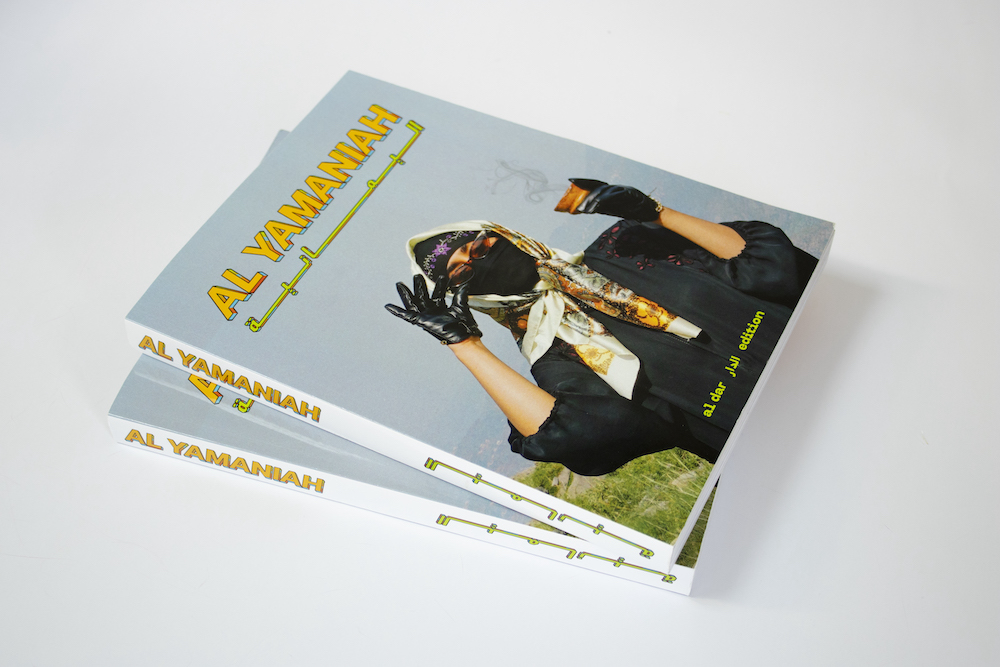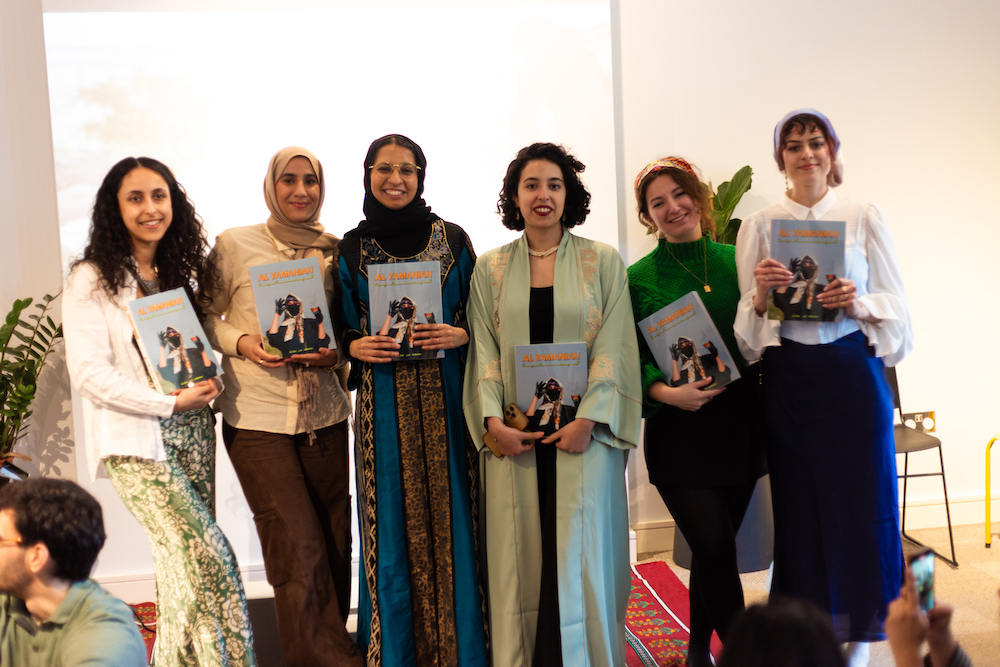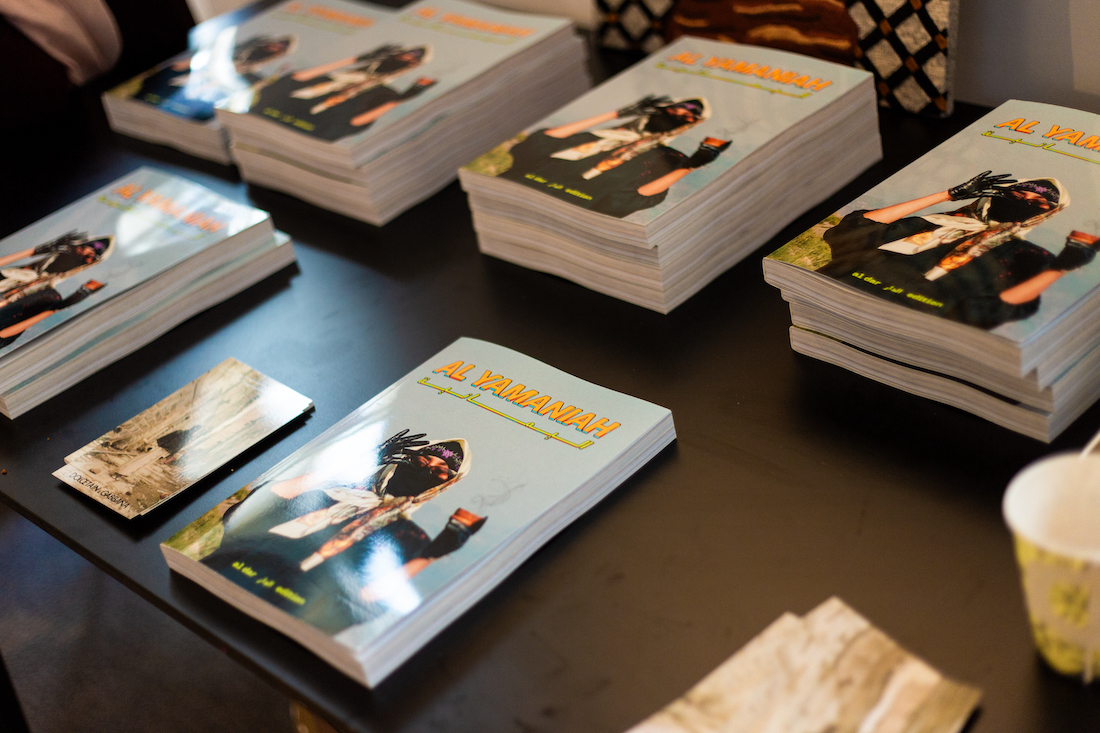Al Yamaniah Magazine is an art publication with a focus on art, talent and culture, that celebrates the creativity of women with Yemeni heritage. Over 60 Yemeni women from within Yemen and its diaspora around the globe have contributed to this 286-page issue which is the first publication of its kind.
It has been co-created by editor Asma Ibrahim and creative director and designer Asma Hamdi. We talked to these dynamic ladies about the content, challenges, and responses to the magazine. This conversation gives an insight into the exciting creative scene for women in Yemen and how that narrative is evolving.

Saira Malik (S.M.): What was the motivation behind publishing Al Yamaniah Magazine when you already have a significant presence online through the digital platform?
Asma Ibrahim (A.I.): Precisely because we had a digital presence, I wanted to do something that brought Al Yamaniah ‘offline’. A printed magazine has a different impact and means each one of us in the community can have a tangible expression of Yemeni creative talent in our homes.
(S.M.): Can you talk to us about the theme, content, and highlights of the first issue?
(Asma.Hamdi): We picked ‘Al Dar’ (Home) as the umbrella theme of the edition. The idea was to explore the various interpretations and personal connections individual artists have with their homeland and heritage. We split the magazine into four parts: Al Dar (home), Ja’ala (sweets), Naqsh (patterns), and Thana’a (tribute). I was happy to see the wide range of submissions we got for each of them, from photography and poetry to illustrations and even art installations. One thing we were certain about was making the magazine visually exciting, showcasing all the vibrant colours and patterns found in Yemeni homes as opposed to the limited idea the wider public might have.
For me, the highlight is the Ja’ala section. Ja’ala refers to sweet treats/snacks that children in Yemen get from a baqala after lunch. For someone that once lived in Yemen but now lives abroad, those trips to the baqala are the warm, nostalgic childhood memories that live in my mind.
(S.M.): We also want to know more about the inspiration for the cover and what that image signifies?
(A.I.): The cover image is by a Yemeni photographer Somaya Samawi. It conveys all the sentiments I wanted to share whilst being exciting and colorful in its own way. There is a brilliant fusion of both tradition and modernity and East and West. The lady on the cover wears a sequined hijab (the type that you typically see school-age girls wear) but also wraps a silk scarf around her head in a European style. The combination of her statement sunglasses, leather gloves and silk scarf nod to the influence of European fashion that has reached all corners of the world. The bakhour she holds in her hand gives a sense of pride in her culture and heritage. It's a subtle yet powerful gesture that speaks volumes about her identity and values. Her overall body language is confident, comfortable and a little bit cheeky. We see her as a confident, Yemeni woman that doesn’t conform with Western ideas of female liberation.
Our team and many of the artists in our community are part of the Yemeni diaspora, we see and embody these fusions in our fashion, art, way of living etc. The different elements in the image tie in well with the themes and felt true to what we wanted to say with this issue.

(S.M.): How would you describe the current creative scene for women in Yemen and is it evolving?
(A.I.): The scene has grown and developed over the past decade significantly. None of us are based in Yemen but we have noticed over the years that more and more women share their work online/on social media which is exciting to see!
(A.H): I think the women’s creative scene is on the rise and thanks to social media female artists based in Yemen can showcase their work, connect with new audiences, and collaborate with other artists.
(S.M.): How does the mainstream media portray Yemeni women?
(A.H.): When mainstream media portrays Yemeni women, it is through a very narrow lens, and we are rarely seeing a full spectrum of their lives and experiences. I think a big problem is that Yemeni women are rarely given the chance to speak for themselves in the media which takes away their agency.
(S.M.): How can Al Yamaniah Magazine can help change the narrative surrounding Yemini women?
(A.H.): By creating this magazine, we wanted a printed medium for female Yemeni artists, both established and emerging artists, to express themselves freely and assert their agency. Each contributor has a distinct style and focus, reiterating the diversity of women in the Yemeni community. I am hoping that this way, we can inspire a dialogue as well.
(S.M.): Give us an overview of the female creatives that have contributed to the magazine?
(A.I.): There is a real variety in terms of their backgrounds, experience and creative practices. Some contributors are based in Yemen, but many are based outside of Yemen – the list includes Egypt, Qatar, Saudi Arabia, the UAE, Indonesia, India, Singapore, the US, UK, Switzerland, Germany and France. Some of the creatives are well-established like Shaima Al-Tamimi and Boushra Almutawakel, whilst others are students publishing their work for the very first time. All of them are women tied together by a connection to Yemen. Some of them live there, but others are half-Yemeni, have never visited Yemen, or have been away for several generations. It was exciting for us to discover new creatives through the process too.

(S.M.): As the first of its kind, how challenging was it to bring this many artists together?
(A.I.): The challenge was creating a coherent and cohesive art magazine that worked both thematically and visually. This was difficult, even harder than we expected, but extremely fulfilling when we got to the end. We constantly experimented with page order, background colours, fonts, and shape. Each double page had to work well together and sometimes we had to be creative about flow. It was an organic process and we’re extremely happy with what we have now.
(S.M.): How has this publication helped the Yemeni diaspora connect with their roots?
(A.I.): The magazine is a very nostalgic piece of work, especially the Al Dar and Ja’ala sections. A lot of the visuals there are relatable to everyone: family gatherings, communal meals, furniture, clothing etc. For many of us, travelling back to Yemen has become rare or difficult to do because of the war. It means that Yemen in some ways is stuck in our memories from our trips before the war began. This is a kind of tangible expression of that situation. It’s also a reminder of the exciting and beautiful parts of Yemen and its culture, which are sidelined and sometimes forgotten because of how unstable the country has been for so long.
(S.M.): What do you think it is about this magazine that has appealed to the public and garnered such a positive response?
(A.I.): Something that I’ve heard multiple people say is that they find the magazine deeply nostalgic, even as non-Yemenis. In fact, I’ve heard this from Arabs and non-Arabs alike. It seems like most people find something that resonates with them. More than anything, this emphasises the shared human experience to me. There really is so much more that unites us than divides us. I also suspect a lot of people haven’t been exposed to many Yemeni artists, let alone sixty plus female creatives, so it’s also a case of introducing them to an art scene with which they aren’t familiar.
(A.H.): We wanted to make it visually interesting and diverse, with various art forms to cater to different audiences. I also think it's popular among Arab audiences because it taps into the shared childhood memories we all have.
(S.M.): Lastly, how can readers get their hands on a copy of Al Yamaniah Magazine?
(A.I.): You can buy a copy via our website. For readers in London, Al Yamaniah magazine is also stocked at the Mosaic Rooms bookshop.







